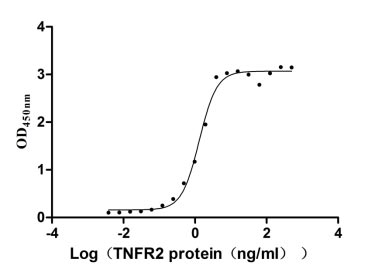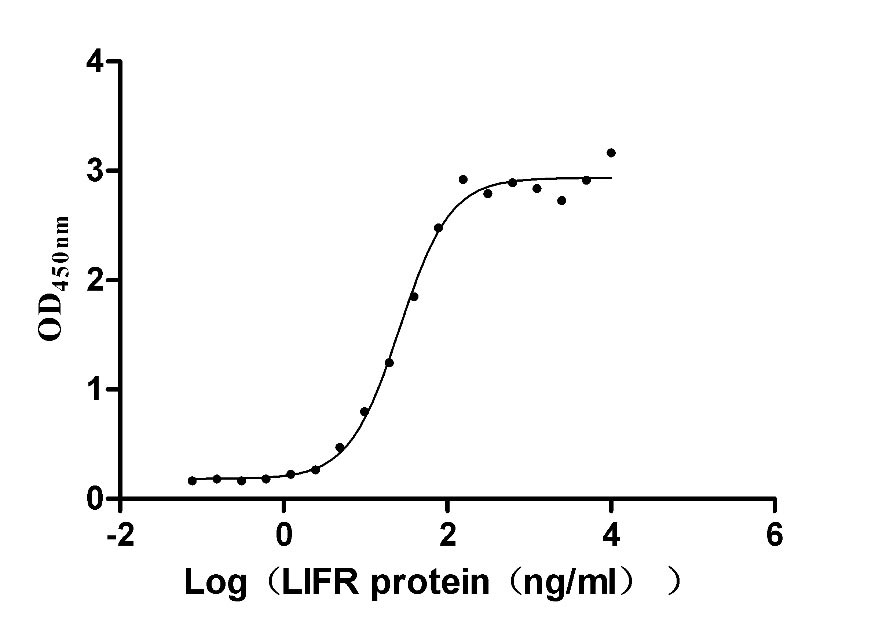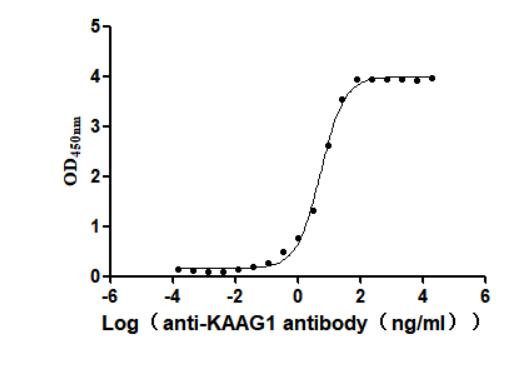Recombinant Mouse ATP-sensitive inward rectifier potassium channel 8 (Kcnj8)
-
中文名称:小鼠Kcnj8重组蛋白
-
货号:CSB-CF012060MO
-
规格:
-
来源:in vitro E.coli expression system
-
其他:
产品详情
-
基因名:
-
Uniprot No.:
-
别名:Kcnj8; ATP-sensitive inward rectifier potassium channel 8; Inward rectifier K(+ channel Kir6.1; Potassium channel, inwardly rectifying subfamily J member 8; uKATP-1
-
种属:Mus musculus (Mouse)
-
蛋白长度:Full length protein
-
表达区域:1-424
-
氨基酸序列MLARKSIIPEEYVLARIAAENLRKPRIRDRLPKARFIAKSGACNLAHKNIREQGRFLQDI FTTLVDLKWRHTLVIFTMSFLCSWLLFAIMWWLVAFAHGDIYAYMEKGTMEKSGLESAVC VTNVRSFTSAFLFSIEVQVTIGFGGRMMTEECPLAITVLILQNIVGLIINAVMLGCIFMK TAQAHRRAETLIFSRHAVIAVRNGKLCFMFRVGDLRKSMIISASVRIQVVKKTTTPEGEV VPIHQQDIPVDNPIESNNIFLVAPLIICHVIDKRSPLYDISATDLANQDLEVIVILEGVV ETTGITTQARTSYIAEEIQWGHRFVSIVTEEEGVYSVDYSKFGNTVRVAAPRCSARELDE KPSILIQTLQKSELSHQNSLRKRNSMRRNNSMRRNNSIRRNNSSLMVPKVQFMTPEGNQC PSES
Note: The complete sequence including tag sequence, target protein sequence and linker sequence could be provided upon request. -
蛋白标签:N-terminal 10xHis-tagged
-
产品提供形式:Liquid or Lyophilized powder
Note: We will preferentially ship the format that we have in stock, however, if you have any special requirement for the format, please remark your requirement when placing the order, we will prepare according to your demand. -
缓冲液:Lyophilized from Tris/PBS-based buffer, 6% Trehalose, pH 8.0
-
储存条件:Store at -20°C/-80°C upon receipt, aliquoting is necessary for mutiple use. Avoid repeated freeze-thaw cycles.
-
保质期:The shelf life is related to many factors, storage state, buffer ingredients, storage temperature and the stability of the protein itself.
Generally, the shelf life of liquid form is 6 months at -20°C/-80°C. The shelf life of lyophilized form is 12 months at -20°C/-80°C. -
货期:Basically, we can dispatch the products out in 1-3 working days after receiving your orders. Delivery time may differ from different purchasing way or location, please kindly consult your local distributors for specific delivery time.Note: All of our proteins are default shipped with normal blue ice packs, if you request to ship with dry ice, please communicate with us in advance and extra fees will be charged.
-
注意事项:Repeated freezing and thawing is not recommended. Store working aliquots at 4°C for up to one week.
-
Datasheet & COA:Please contact us to get it.
相关产品
靶点详情
-
功能:This potassium channel is controlled by G proteins. Inward rectifier potassium channels are characterized by a greater tendency to allow potassium to flow into the cell rather than out of it. Their voltage dependence is regulated by the concentration of extracellular potassium; as external potassium is raised, the voltage range of the channel opening shifts to more positive voltages. The inward rectification is mainly due to the blockage of outward current by internal magnesium. Can be blocked by external barium.
-
基因功能参考文献:
- Endotoxemia increases pulmonary Kir6.1 gene and protein expression. PMID: 29433570
- miR-20 may regulate myocardiac ischemia by targeting KATP subunit Kir6.1 to accelerate the cell apoptosis. PMID: 28786072
- S422L mutation in KCNJ8 gene is not a direct cause of J wave syndrome. PMID: 28928055
- Together, these results implicate the incorporation of native Kir6.1 subunits into pancreatic KATP channels and a contributory role for these subunits in the control of insulin secretion. PMID: 27956473
- data support the existence of an endothelial KATP channel that contains Kir6.1, is involved in vascular reactivity in the coronary circulation, and has a protective role in ischemia reperfusion. PMID: 28893911
- Similar to previous results in Kir6.1(-/-) myocytes, Kir6.1 gain of function myocytes demonstrate resistance (less volume derangement) to stress of cardioplegia. PMID: 27884343
- K(ATP) channel gain-of-function leads to increased myocardial L-type Ca(2+) current and contractility in Cantu syndrome. PMID: 27247394
- Kcnj8 mutation is responsible of heart conduction abnormalities in Cantu syndrome. PMID: 26142302
- our study demonstrated that exercise training up-regulated Kir6.1, improved tissue oxygenation recovery, and protected the heart against I/R injury PMID: 25474642
- Results suggest that the vascular KATP channel Kcnj8 is organ protective in diabetic conditions. PMID: 25825210
- The absence of Kir6.1 does not affect the contractile properties of myocytes during stress, suggesting the absence of Kir6.1 improves myocyte tolerance to stress via an unknown mechanism. PMID: 25872691
- Sulfhydration of SUR2B subunit modifies tyrosine nitration of Kir6.1 subunit within the KATP channel complex. PMID: 25552582
- Kir6.1 underlies the vascular smooth muscle KATP channel and has a key role in vascular reactivity and blood pressure control. PMID: 24914196
- Native K(ATP) channels in mouse vas deferens myocytes are a heterocomplex of K(IR)6.1 channels and SUR2B subunits. PMID: 24117345
- Kir6.1 knockdown exacerbates cerebral ischemia reperfusion-induced brain damage. PMID: 23663330
- A possible partnership between Cx43 and Kir6.1 will help in better understanding their roles in ischemia/hypoxia preconditioning. PMID: 22960107
- K(ATP) channel deregulation can have a critical impact on innate antiviral immunity in the heart. PMID: 21719711
- gene disruption causes prinzmetal angina in knockout mice PMID: 11984590
- Kir 6.1 gene expression was upregulated by almost 22-fold, whereas SUR2B was downregulated by threefold after inflammation. Decreased motility of colon during inflammation may be associated with changes in transcriptional regulation of Kir 6.1 and SUR2B. PMID: 14962845
- Kir6.1-containing K(ATP) channel, by coupling vasoreactivity with metabolic demand, provides a vital feedback element for cardiovascular tolerance in endotoxic shock. PMID: 17077304
- Expression of functional Kir6.1 channels regulates glutamate release at CA3 synapses in generation of epileptic form of seizures. PMID: 17883401
- Study identified a profound susceptibility to infection phenotype due to a null allele of Kcnj8, encoding Kir6.1, a protein that combines with SUR2 to form an ATP-sensitive potassium channel (K(ATP)) expressed in coronary artery. PMID: 18026101
- The data suggest it is premature to assign Kir6.1 a role in mitoK(ATP) on the basis of immunoreactivity alone. PMID: 18068667
- SUR2 and Kir6.1 mRNAs were found to be the most abundant in ventricular fibroblasts. PMID: 19166858
显示更多
收起更多
-
亚细胞定位:Membrane; Multi-pass membrane protein.
-
蛋白家族:Inward rectifier-type potassium channel (TC 1.A.2.1) family, KCNJ8 subfamily
-
数据库链接:
KEGG: mmu:16523
STRING: 10090.ENSMUSP00000032374
UniGene: Mm.1482
Most popular with customers
-
Recombinant Human Tumor necrosis factor receptor superfamily member 1B (TNFRSF1B), partial (Active)
Express system: Mammalian cell
Species: Homo sapiens (Human)
-
Recombinant Human Leukemia inhibitory factor (LIF) (Active)
Express system: Mammalian cell
Species: Homo sapiens (Human)
-
Recombinant Human E3 ubiquitin-protein ligase ZNRF3 (ZNRF3), partial (Active)
Express system: Mammalian cell
Species: Homo sapiens (Human)
-
Recombinant Rat Microtubule-associated protein tau (Mapt) (Active)
Express system: Mammalian cell
Species: Rattus norvegicus (Rat)
-
Recombinant Macaca fascicularis Claudin (CLDN18)-VLPs (Active)
Express system: Mammalian cell
Species: Macaca fascicularis (Crab-eating macaque) (Cynomolgus monkey)
-
Recombinant Human CD70 antigen (CD70), partial (Active)
Express system: Mammalian cell
Species: Homo sapiens (Human)
-
Recombinant Macaca fascicularis C-type lectin domain family 4 member C(CLEC4C), partial (Active)
Express system: Mammalian cell
Species: Macaca fascicularis (Crab-eating macaque) (Cynomolgus monkey)
-
Recombinant Human Kidney-associated antigen 1(KAAG1) (Active)
Express system: Baculovirus
Species: Homo sapiens (Human)




















